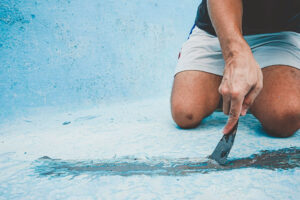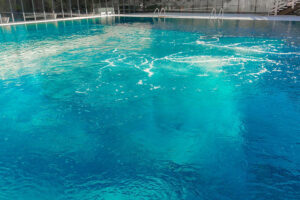A sparkling, clean pool is a joy to behold and a delight to swim in. However, maintaining the perfect balance of pH and chlorine levels is crucial for keeping your pool safe and inviting. In this blog post, we’ll guide you through the steps to achieve and maintain the proper pH and chlorine levels in your pool. And if balancing chemicals isn’t your forte, our expert team at Sea Breeze Pools is here to help you every step of the way.

Understanding pH and Chlorine Levels
Before diving into the how-to, let’s understand why pH and chlorine levels are important for your pool:
pH Levels: The pH scale ranges from 0 to 14, with 7 being neutral. For pool water, the ideal pH level is between 7.2 and 7.6. A pH level too low (acidic) can irritate swimmers and corrosion to pool equipment. A pH level too high (alkaline) can lead to cloudy water and scaling.
Chlorine Levels: Chlorine is essential for killing bacteria and keeping your pool water safe. The ideal chlorine level for a pool is between 1 and 3 parts per million (ppm). Too little chlorine can lead to algae growth and unsafe swimming conditions, higher chlorine levels can cause skin and eye irritation.
Steps to Achieve Proper pH and Chlorine Levels
1. Test Your Water:
Start by testing your swimming pool water using a reliable test kit or test strips. This will give you an accurate reading of your current pH and chlorine levels.
2. Adjusting pH Levels:
If the pH is too low, add a pH increaser such as sodium carbonate to raise the pH level. To lower a high pH level, use a pH decreaser such as sodium bisulfate or muriatic acid. Follow the product’s instructions for the correct dosage on both.
3. Balancing Chlorine Levels:
If chlorine is too low add chlorine to your pool. You can use liquid chlorine, chlorine granules, or chlorine tablets. Be sure to add the appropriate amount based on your pool’s volume and the product’s instructions.
If the chlorine levels are too high, you have two options. You can wait for them to decrease naturally. You can also use a chlorine neutralizer to lower them more quickly.
4. Retest and Repeat:
After making adjustments, wait a few hours (or as recommended by the product instructions) and retest the water. You may need to make additional adjustments to get the levels just right.
Tips for Maintaining Proper Levels
To keep your pool in good condition, you should test the water weekly, especially during busy times or hot weather. Clean the pool regularly by removing debris, brushing the walls and floor, and vacuuming. Make sure the filtration system is working well to keep the water clean.
Keep an eye on how much the pool is used, as this can affect the chemical levels. After parties or when the pool is used a lot, test the water and make any necessary adjustments.
Sea Breeze Pools: Your Pool Care Experts
Balancing pH and chlorine levels can be tricky, but you don’t have to do it alone. At Sea Breeze Pools, we focus on keeping your pool chemistry balanced for a clean and safe swimming experience. Our team offers comprehensive pool cleaning and maintenance services, ensuring your pool stays in top condition year-round.
Let us take the guesswork out of pool care. Enjoy your pool without the hassle!
Contact Sea Breeze Pools today to learn more about our services and schedule a FREE consultation.






